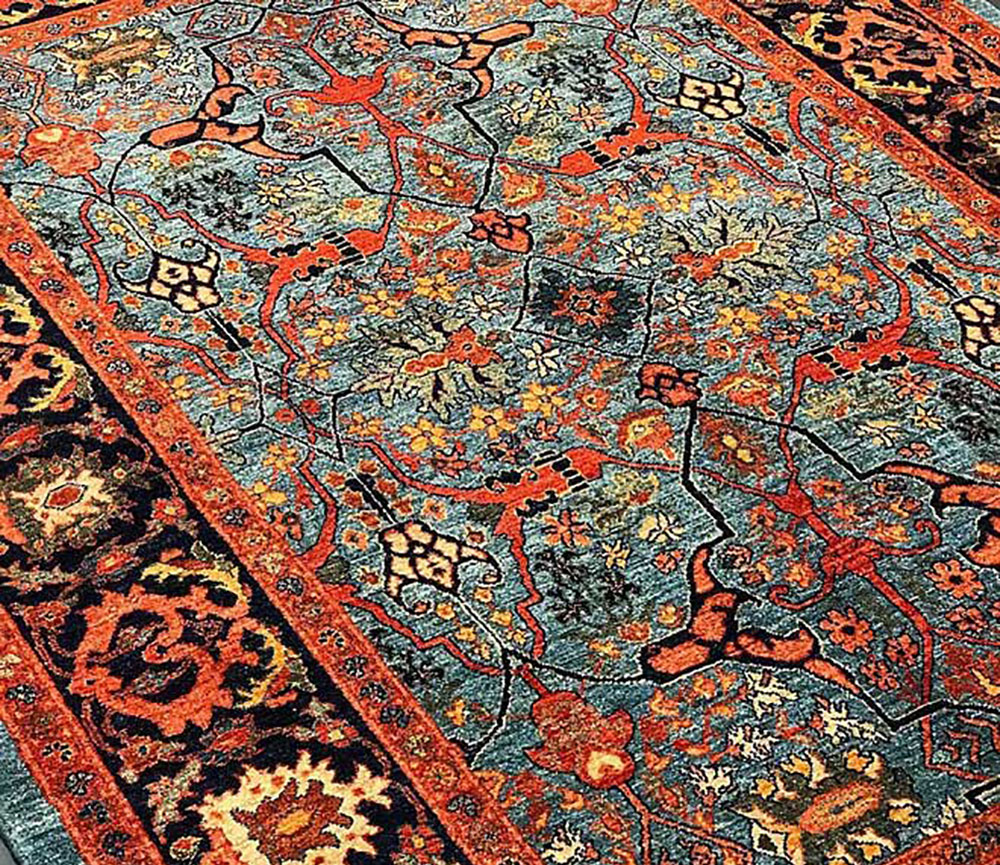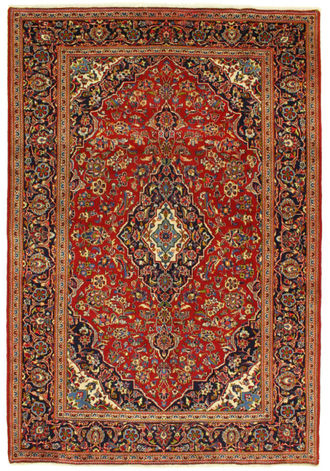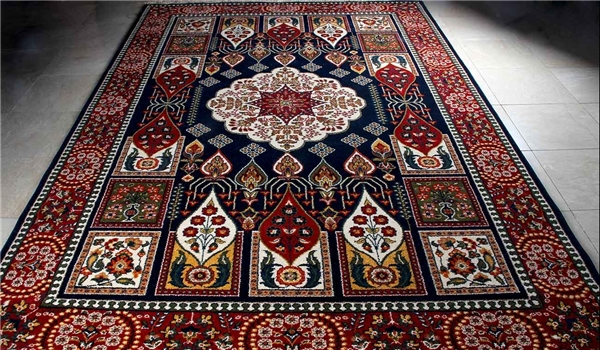
Knot Definition: Knot
means wrapping and tying wool or silk around the web.
The knots that are common in traditional carpet weaving in Iran are
generally of two main types, each of which is applied in a particular style and
manner. Knowing the type of carpet knot is a good criterion for determining the
texture of carpet. Carpets usually use two main types of knots for carpet
weaving.
Main Nodes:
Symmetrical group (Turkish weave): A device called a hook is used to
weave this type of knot. This type of knot is much stronger than other knots and
provides great strength in carpet.
The procedure is to first hook a pair of undersides with the help of pulling and
pulling a portion of the desired cream of silk or wool in the left hand between
the forefinger and the toes. Hook the hook between the two strings and pull it
out from the back of the first strand and back through the two strands and then
pass through the second strand and finally retrieve the cream head from the two
strands and remove both strands of cream. Together they pull down evenly,
cutting off the two ends of cream with the sharp edge of the hook. This is done
in side or side strings, respectively, to finally complete a row of nodes on the
set of strings in the horizontal section. Cities that use symmetrical or Turkish
nodes include most of northwestern Iran such as East Azarbaijan, Zanjan,
Ardebil, part of Kurdistan and part of Khorasan, etc.
Types of Turkish knots:
Ordinary Turkish knot lying down or standard
• A type of Turkish knot with the opposite or prominent name.
• Premium node.
Asymmetric knot (Persian knit knot): For texture this type of knot is
wrapped around a single thread and the other end is pulled forward and released
from the back of the second thread.
The method of closing the asymmetric or Persian knot of the tissue is to hold a
piece of cream in the left hand with a right pair of twine (up and down) and
pull it forward. . They then slip one end of the cream from the back of the
first fork and run through the back of the second fork, eventually pulling it
forward between the two strands, moving both ends of the cream completely
downward, and added by Spades or knives are knit.
This knot is called asymmetric because it only loops around a thread and remains
empty on the second thread. The asymmetric knot varies depending on which weaver
first wraps the cream.
Asymmetric knot to the right: If the weaver first wraps the cream around the
right thread and pulls it out from behind the left thread, it is called the
asymmetric knot to the right.
Asymmetric knot to the left: If the weaver first wraps the cream around the left
thread and pulls it out from behind the right thread, it is called the
asymmetric knot to the left.
Compare Turkish and Persian knots:
1. The napkin used in carpets with Turkish knot is less thick than
the napkin used with Persian knot.
2. Normally weave Turkish knots using hooks and Persian knits by hand.
3. In both knots we use yarns such as crack, wool and silk. But the consumption
of yarn in Turkish knot is more than Persian.
4. Root durability of carpets woven with Turkish knot is more than carpet woven
with Persian knot.
In addition to the Turkish and Persian nodes, other
nodes are also used:
Pair knit: Sometimes the weaver knits it around four or six threads
instead of just knitting the cream around a pair of threads. This type of knot
is commonly used to save time and consumables. This type of node is asymmetric
and asymmetric. If the Persian weaver is weaving, the asymmetric pair is called
asymmetry and its texture is described above. If the weaver is Turkish weaver is
called a symmetrical pair knot and the description of this is explained above.
Pair nodes are usually used in areas without a map.
Disadvantages of Pair Node:
Excess loads of the pellets move to the end of the cream knot,
thereby weakening the natural shelf-life of the nodes, and the villi develop
premature wear.
How to distinguish between the main node and the pair node in the rug?
To distinguish a pair of knots from the main knot, it is enough to spread the
rug back on the ground and open some rugs opposite the rug to see the end of the
knots. If the knot is closed normally, a complete and regular rotation of the
knot and the bottom of the knot will be seen. But if the knot is woven in pairs,
naturally the distance created by the roughness between the paired knots between
the threads is greater than the distance between the main knots. In addition, a
kind of bulge in the form of pea seed is palpable at the end of the nodes.
However, this type of diagnosis is different in fine-grained and coarse-grained
carpets.
Single-blade knot: The single-blade knot is closed on a single thread. Normally,
a typical node is closed on a pair of threads, ie a thread and a thread below.
But in single blur node it is used only for one thread. This knot is used for
very fine carpets and especially the image. For full execution of dots and
shadows, for fine lines such as eyes and eyelashes and so on.
Pendant knot: Pendant knot is a decorative knot and is actually a node
consisting of four different knots. This knot is mostly used for texturing
image-like designs on coarse-textured carpets.
Reverse Node: This type of node closes in contrast to the original texture for
highlighting images alongside other nodes, and may apply the weaver above,
below, or to the sides of the main nodes, using the reverse node as a case.
Buckling knot (Kerman knitting knitting): The method is to make the cream
tighten on the ribs after it has been rotated around the knot, staying free and
finally lowering and lifting the bow. And the nails are replaced and something
like a knot is created. The buckle knot is not recognizable from the back of the
carpet because the back of such carpets is like the back of the carpet woven
with the original knot. But with a hook or needle, the knot can be easily pulled
out. Carpets made with such knots are usually short lived.
Two-color knot: Two-color knot As the name implies, it is usually a combination
of different colored creams used in two colors in carpet texture. This knot is
mostly used to create a light shade between two images or to show some parts of
the map delicate and beautiful.


